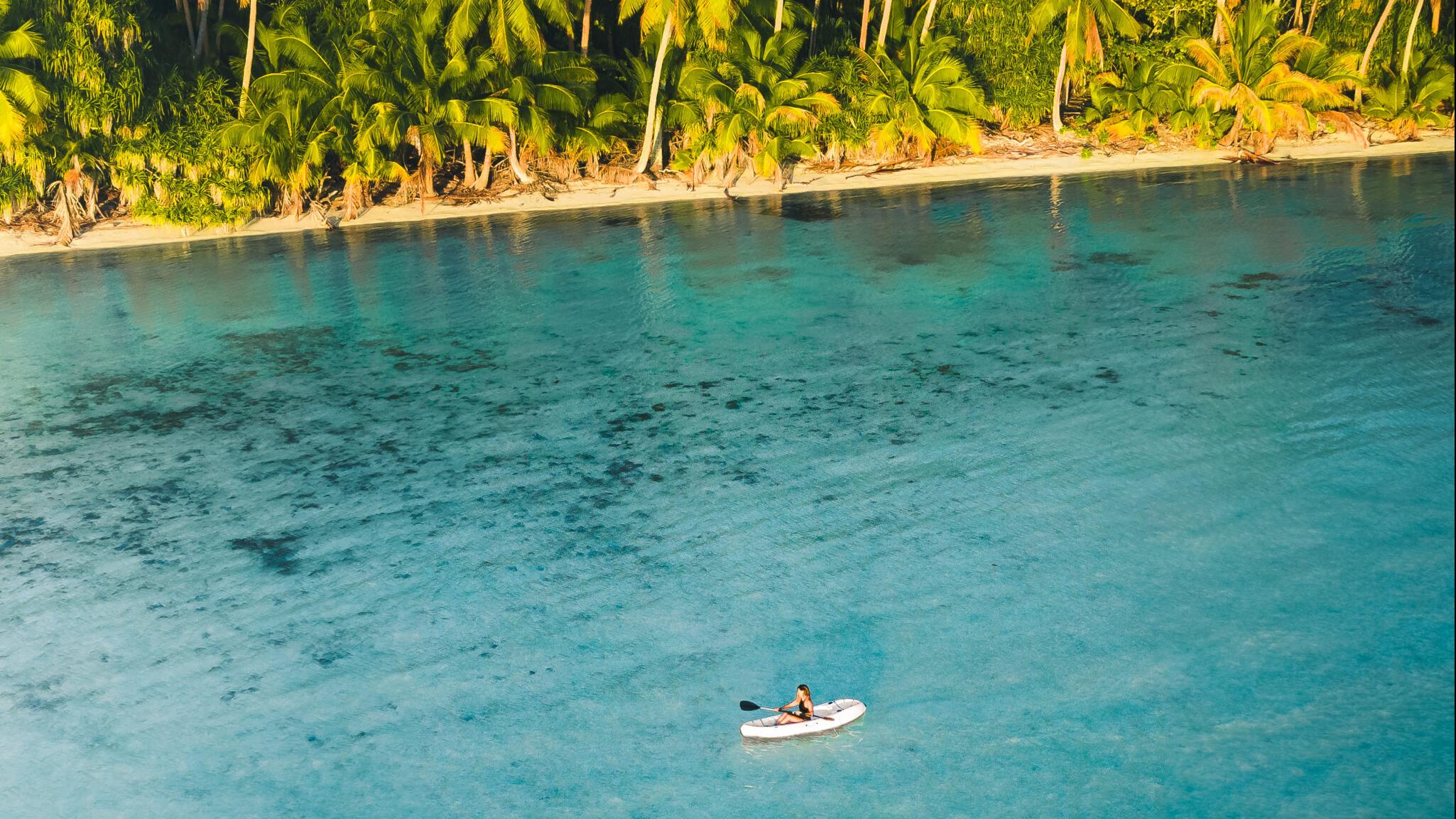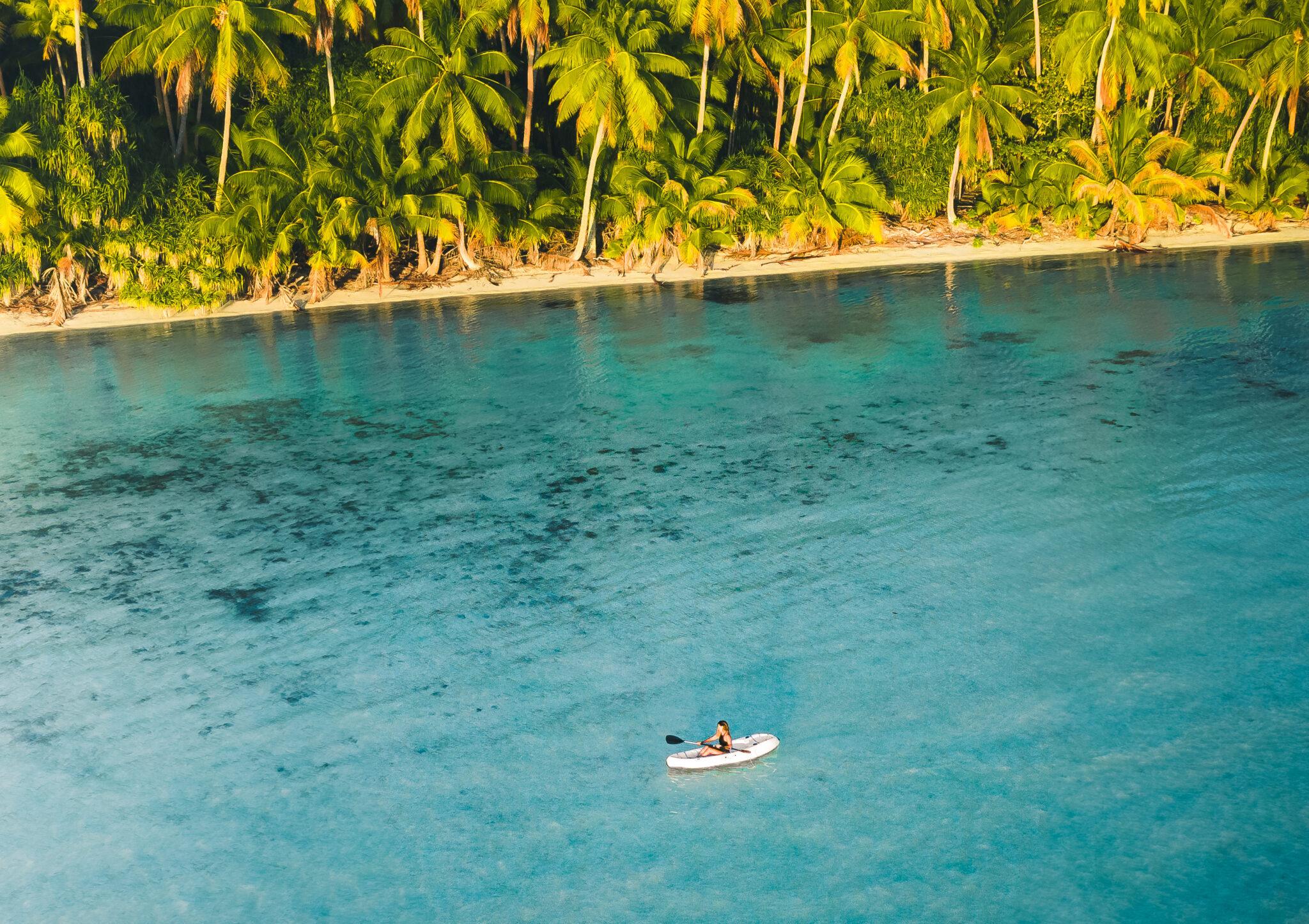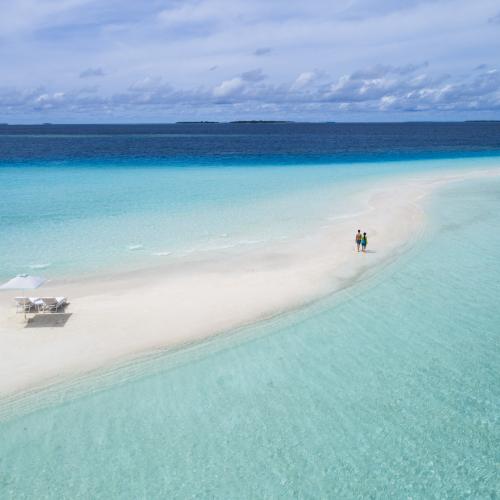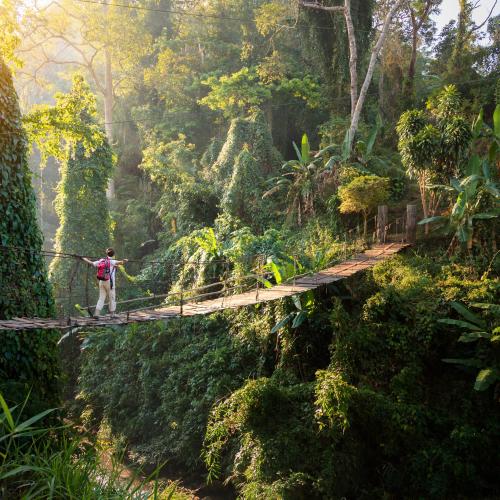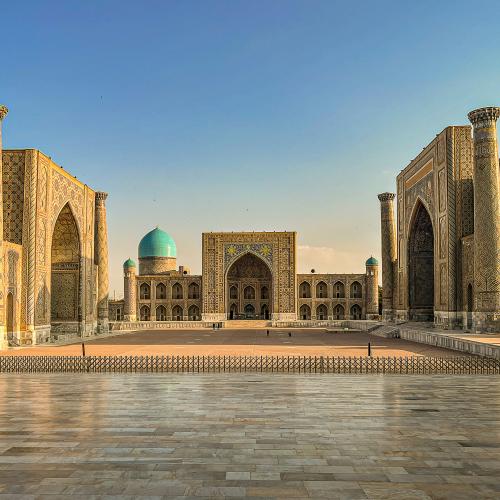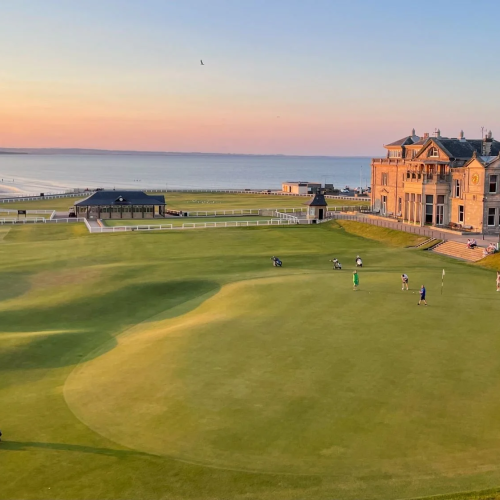Godfather of Green
By Jackie & Roger Harris
Marlon Brando is often regarded as one of the greatest actors of his generation, famed for magnetic performances in movies such as A Streetcar Named Desire (1951), Last Tango in Paris (1972), or The Godfather (1972). Less well-known is Brando’s passionate activism in support of various causes, including the civil rights movement, Native American sovereignty, anti-apartheid efforts in South Africa, and environmental protections, especially in the South Pacific. Brando fell in love with Tahiti in the early 1960s, when he visited the atoll of Teti’aroa while scouting locations for the film Munity on the Bounty (1962). While there, he met and fell in love with his co-star Tarita Teriipaia, an actress of French Polynesian and Chinese descent who would become his third wife.
Captivated by the unspoilt beauty and tranquility, Brando secured a 99-year lease in 1996 for Teti’aroa, a paradise of 12 motu, or islets, circling a luminous turquoise lagoon. In 1970, he built his home and a small village on Onetahi, one of the islets. Constructed using local materials – coconut wood, thatched roofs, and even seashells for sinks – the dwellings became a refuge and a gathering place for friends, family, and visiting researchers studying the atoll’s remarkable ecology and archaeology. Over time, this modest enclave evolved into an unassuming hotel managed by Teriipaia. “The happiest moments of my life have been in Tahiti,” Brando wrote in his 1994 autobiography Songs My Mother Taught Me. “If I’ve ever come close to finding genuine peace, it was on my island among the Tahitians.” The hotel quietly operated for more than 25 years before closing in 2004, shortly after Brando’s death. His estate entrusted development rights to Pacific Beachcomber SC., a Tahitian hospitality group, and in 2014 they opened The Brando, an island resort embodying Brando’s vision of a sustainable, luxurious paradise.
Pacific Beachcomber operates seven hotels across French Polynesia where they pioneer the use of sustainable technology and support marine research. With The Brando, they have created a barefoot-luxury eco-resort that seamlessly integrates with a scientific research, education, and conservation centre on this pristine, private atoll. The resort offers 35 one-, two-, or three-bedroom villas, along with an exclusive private residence – each thoughtfully spaced and set back from the beach, tucked among the tropical foliage for maximum privacy and tranquility. Dining is a refined fusion of Polynesia flavours and French gastronomy by the acclaimed chef Jean Imbert. Guests can choose from five distinct venues, including Nami Teppanyaki grill, an all-day beach-side restaurant, and the intimate Les Muntines for Polynesian fine dining. For something more personal, private meals can be arranged at your villa or in the locations around the resort, such as a candlelit table set along the water’s edge. A cherished vestige from Brando’s original retreat, Bob’s bar was once the actor’s favourite hangout, named for his barman who used to serve up Brando’s sundowner cocktail the Dirty Old Bob. Today, this laid-back cocktail lounge continues to serve South Pacific-inspired drinks, inviting guests to toast Brando’s enduring legacy.
Dirty Old Bob
2 oz. Jack Daniel’s
1.5 oz. pineapple juice
¼ oz. lime juice
4 fresh mint leaves
Half an egg white
3 drops Angostura Bitters
1oz. Tetiaroa honey
While the name may sound unappealing, this ice-cold specialty sip should be in your hand as you sway in the shade of a perfectly placed hammock.







